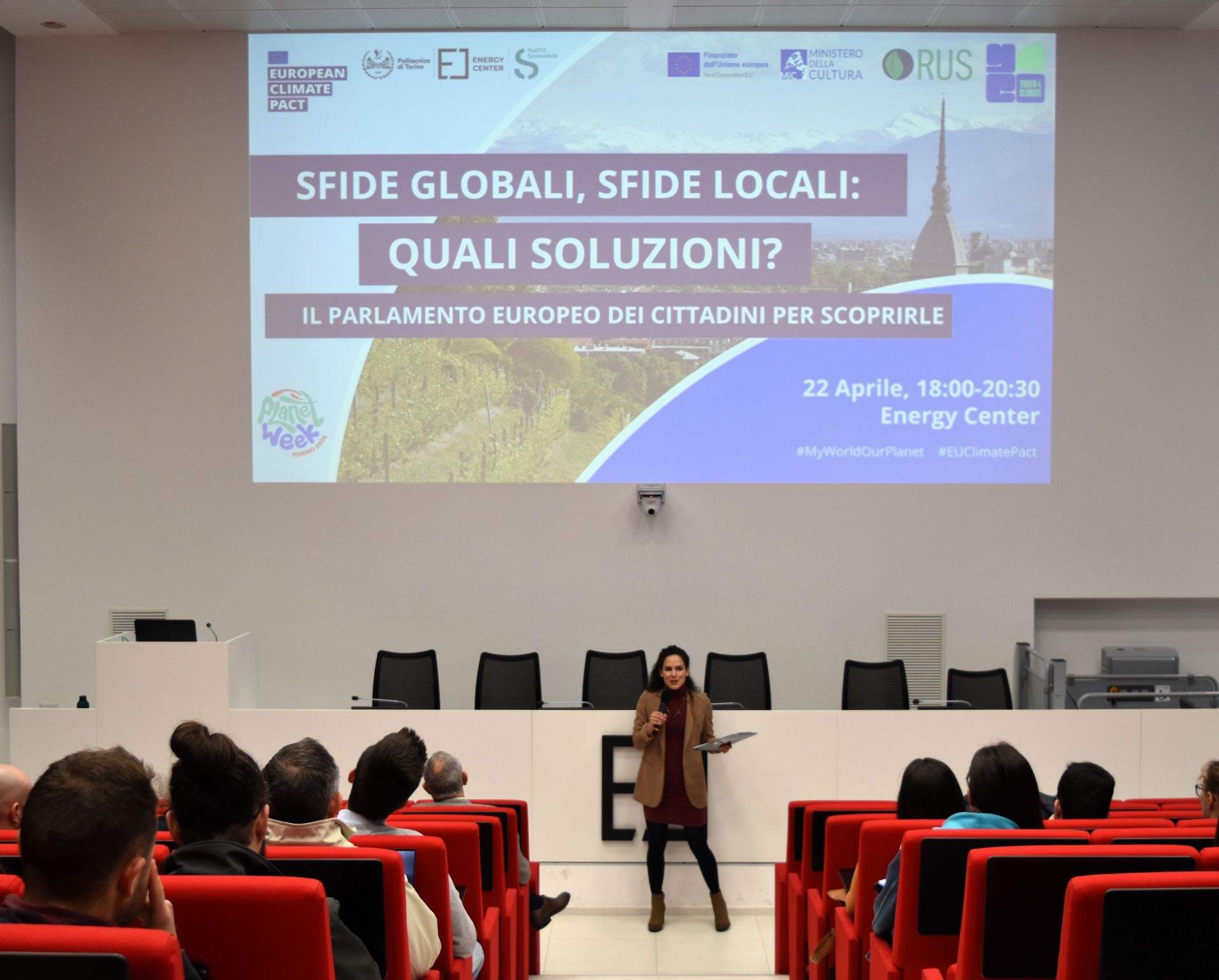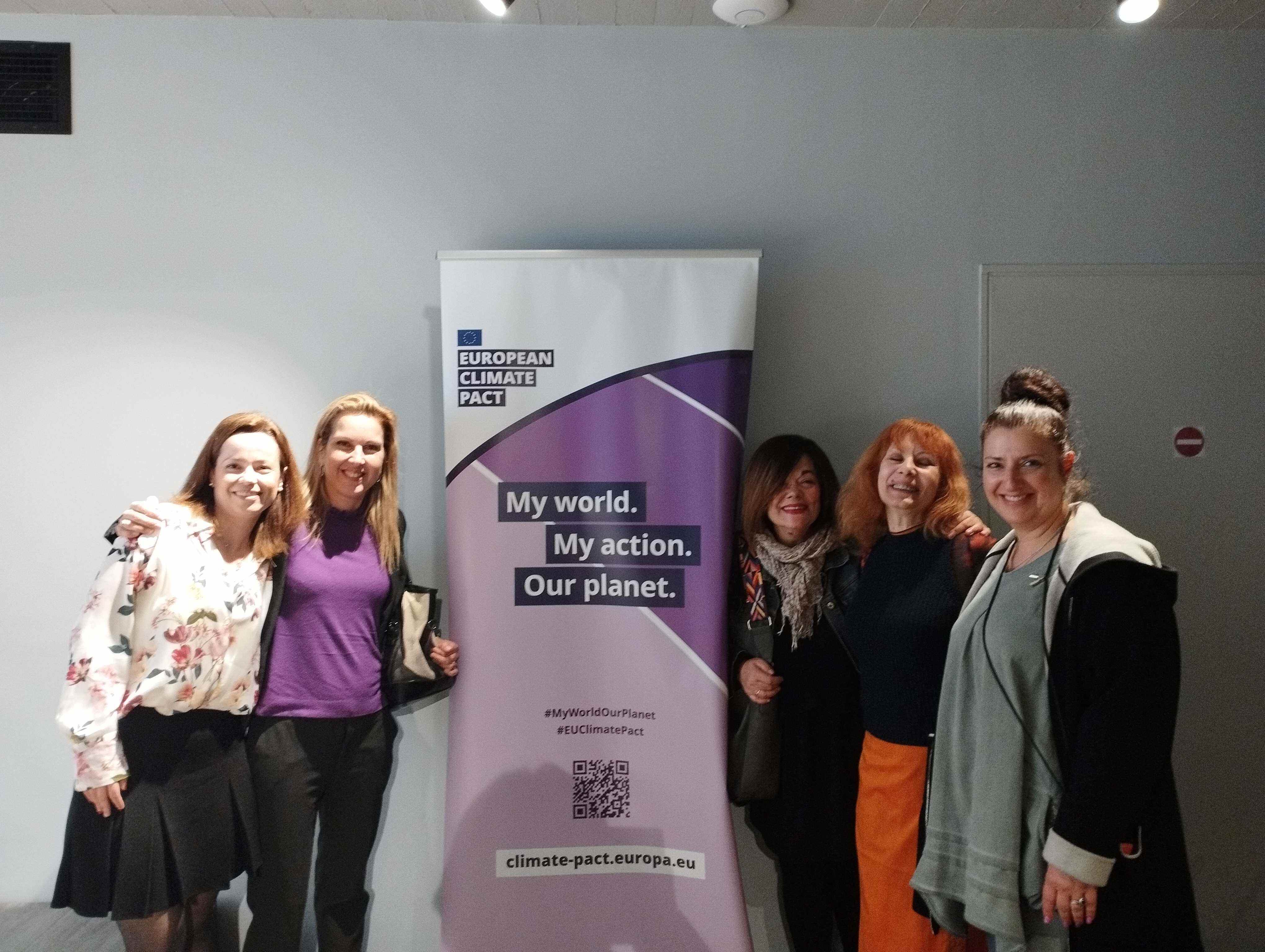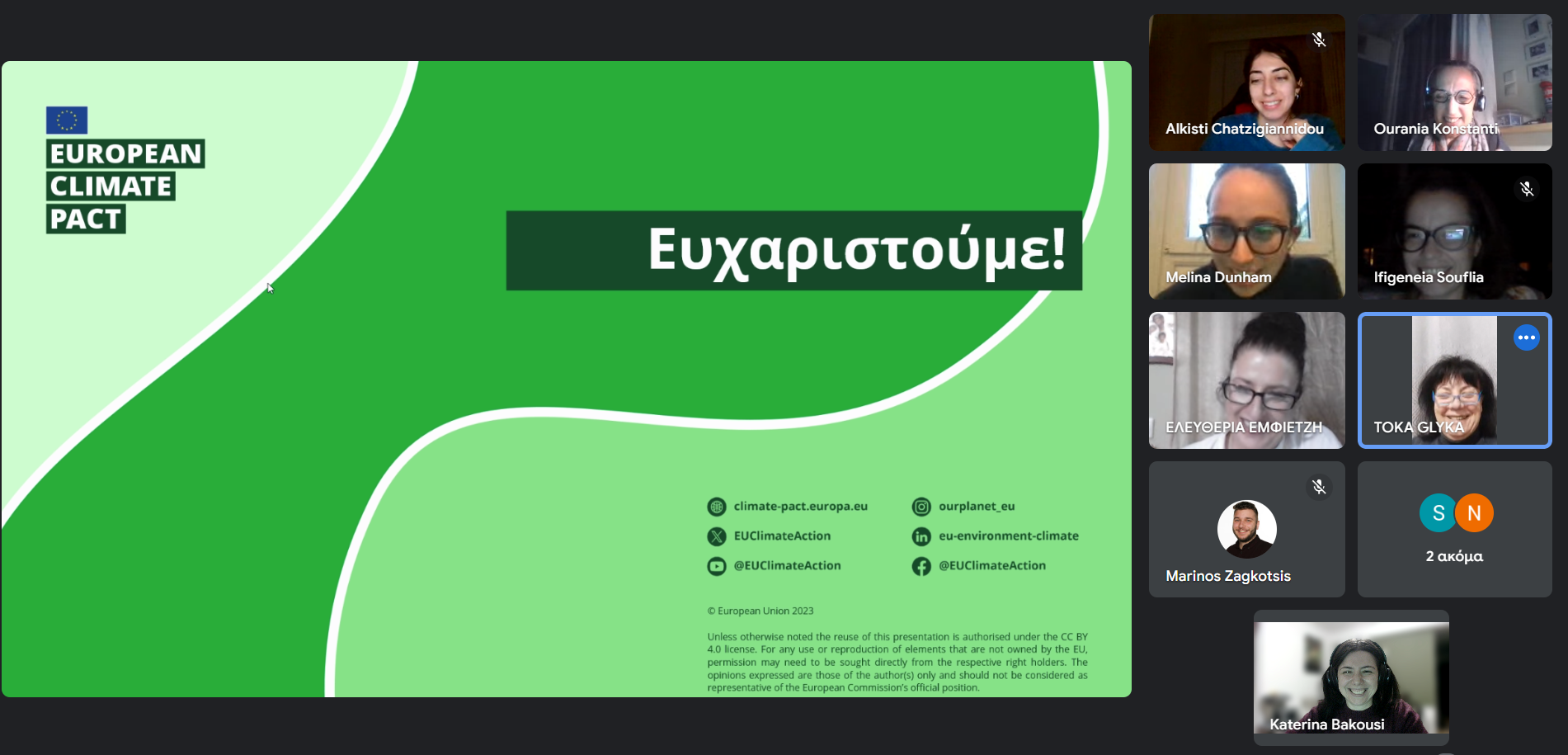Learn more about leading a Peer Parliament in brief
- Overview
Gather a small group of your friends, family, neighbours or colleagues, and facilitate a discussion on how the transition to climate neutrality can work in practice in your everyday lives and what policies should be put in place to encourage us going forward. Or go bigger and facilitate a Peer Parliament for a larger group, for example in a classroom or a youth group. Topics suggested include mobility, energy, food and consumption.
- Objectives
Raise awareness of opportunities for climate action in daily life among your close relations and in your wider community and, simultaneously, develop your facilitation skills for discussions on climate policy and action. The format also allows students and youth groups to take part in a democratic exercise.
- Target group
General public. Your close relations (friends, family, neighbours or colleagues) or, alternatively, a targeted group in your community (e.g. a classroom’s students or a local youth group).
- Requirements
To host a Peer Parliament, download the Peer Parliaments toolkit, including the facilitation guide and learning materials. During the Peer Parliament, share the learning materials with your guests and use the ballots provided in the facilitation guide to capture your group's voting results.
Peer Parliament in action
A peer parliament on sustainable energy led by Pact Ambassador Lorenzo Dello Sbarba, Brussels, Belgium, 12 June 2024.A peer parliament on sustainable energy led by Pact Ambassador Lorenzo Dello Sbarba, Brussels, Belgium, 12 June 2024. 

Pact Ambassador Marcos Marchionno Rebeiro led a peer parliament discussion on sustainable consumption, Malaga, Spain, 15 March 2024.Pact Ambassador Marcos Marchionno Rebeiro led a peer parliament discussion on sustainable consumption, Malaga, Spain, 15 March 2024. Peer parliament on sustainable energy led by Pact Ambassador Stefano Cisternino, Brussels, Belgium, 12 June 2024.Peer parliament on sustainable energy led by Pact Ambassador Stefano Cisternino, Brussels, Belgium, 12 June 2024. 

Pact Ambassador Aurora Audino led a session with three parallel peer parliaments during the G7 meeting in Turin, Italy, April 2024.Pact Ambassador Aurora Audino led a session with three parallel peer parliaments during the G7 meeting in Turin, Italy, April 2024. 

Ambassadors Alexandra Politaki and Ifigeneia Souflia led a peer parliament on urban planning for green and sustainable cities, Greece, 29 March 2024. Ambassadors Alexandra Politaki and Ifigeneia Souflia led a peer parliament on urban planning for green and sustainable cities, Greece, 29 March 2024. 

The team behind a peer parliament on urban planning for green and sustainable cities, Athens, Greece, 29 March 2024.The team behind a peer parliament on urban planning for green and sustainable cities, Athens, Greece, 29 March 2024. 

Pact Ambassadors Melina Dunham and Aikaterini Bakousi hosted an online peer parliament discussion, Greece, 2 April 2024.Pact Ambassadors Melina Dunham and Aikaterini Bakousi hosted an online peer parliament discussion, Greece, 2 April 2024. Pact Ambassador Kristina Lazarova led a Peer Parliament with students aged 12–18 and their teachers, Plovdiv, Bulgaria, 7 December 2024Pact Ambassador Kristina Lazarova led a Peer Parliament with students aged 12–18 and their teachers, Plovdiv, Bulgaria, 7 December 2024
- Before
- Read the facilitation guide, select a location and invite your guests;
- Register as a host.
- During
- Begin with a welcome and introduction;
- Share the learning materials with your guests and moderate the debate considering the insights provided in the facilitation guide. For each debate question selected, follow a three-step process:
- LEARN: read the context (from the learning materials) and learn about the different options (about 15 minutes),
- DISCUSS: moderate the discussion and listen to everyone’s views (about 30 minutes),
- VOTE: supervise the voting procedure (about 15 minutes);
- If the participants agree, take a group photo. If you would like to share the group photo with the European Climate Pact, please ask the participants to sign this consent form so that the images can be made publicly available;
- Conclude by thanking everyone for their valuable contributions to the debate and encourage them to host their own Peer Parliaments.
- After
- Share the group results with the European Climate Pact. Your group’s votes and ideas will be discussed with European policymakers.
- To the extent possible, stay in touch with the participants beyond the activity.
Tips
-
At the beginning of the gathering, explain the goal and structure of the debate, as well as your role as the host. Tell your guests that you will be responsible for keeping the discussion active and focused, and for creating an environment in which everyone has the chance to participate. Agree on some group rules to create a safe and nice environment for everybody. Ask the group if they agree with these rules and if there is something they want to add.
-
Icebreaker round. Ask your guests to introduce themselves and, for example:
- share a fun or interesting story from their recent daily life that is connected to the topic of the debate (mobility, energy or consumption);
- tell about the most recent discussion/argument they have had about the topic of the debate (mobility, energy or consumption) and the outcome of the discussion;
- outline the outcome they wish to achieve from this discussion.
-
Prepare supplies to stimulate creativity (e.g. pens and scrap paper, snacks, etc.).
-
A positive and friendly atmosphere is crucial for a lively discussion and group outcomes.
-
Keep an eye on the clock: ensure time for the different sections of the debate or appoint a member of your group to help you keep to schedule.
-
If you are facilitating a Peer Parliament in a more formally structured setting, such as a classroom with 15 to 35 people, consider dividing the participants into three groups. Each group chooses one of the proposed topics (mobility, energy or consumption). After the discussion in small groups, each group presents their results in the plenary, for discussion and final vote by all the participants’ assembly.
Example(s) of implementation
-
Former Pact Ambassador Annika Gehrmann from Germany hosted five Peer Parliaments with people that she did not know before and who learned about the sessions through different media, including local press, the info-flyer shared in churches, social media and posters affixed in shops and at local places.
-
From November 2021 to March 2022, people all around Europe conducted a total of 461 Peer Parliaments across 26 EU Member States. They provided crucial insights into how Europeans want to fight climate change, with arguments for and against different solutions to tricky societal and environmental problems – report available here.
On Peer Parliaments, “a very good instrument with lots of impact”
“The material and all the preparation that we received as Ambassadors made it quite easy to organize sessions and to discuss the EU plans with people regardless of their background. The fact that the outcome was presented to high level politicians in the EU Commission made the effectiveness noticeable. Especially with view to the upcoming elections for the EU parliament, this could be a very useful format.”
Annika Gehrmann, Germany
Showcase the results and encourage others to scale-up!
- Encourage participants to share your discussion outcomes, suggestions, pictures and videos on social media using the #EUClimatePact and #MyWorldOurPlanet hashtags.
Suggestions to continue ongoing engagement
- Encourage participants to host their own Peer Parliaments.
- Invite participants to use UN Act Now – AWorld app to reduce their carbon footprint through daily activities such as walking and cycling or reducing food waste.
- Explore other Climate Pact tools to engage with your networks and communities.


